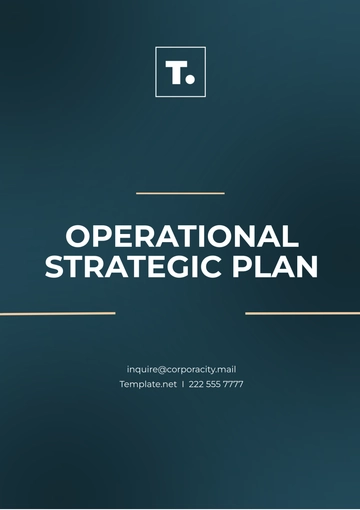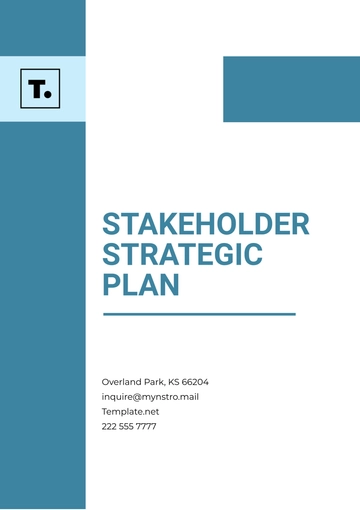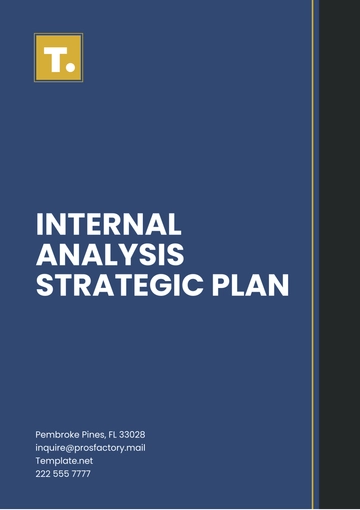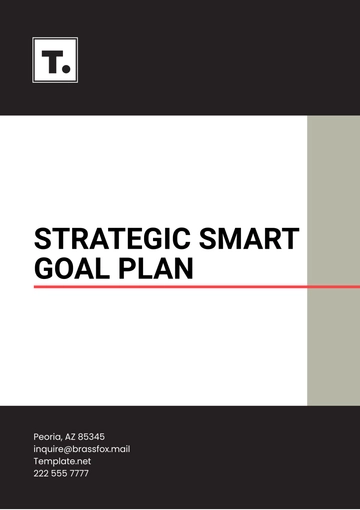Free Influencer Marketing Strategic Plan

Prepared by: [YOUR NAME]
Date: [DATE]
I. Introduction
Influencer marketing has emerged as a pivotal strategy for brands aiming to connect with their target audience authentically and effectively. This strategic plan outlines how to leverage influencers to enhance brand visibility, engage with potential customers, and drive conversions.
II. Objectives
Our influencer marketing strategy aims to achieve the following objectives:
Increase brand awareness and reach new audiences.
Enhance engagement with target demographics.
Drive traffic and boost sales conversions.
Strengthen brand reputation and loyalty.
III. Target Audience
The success of influencer marketing heavily relies on understanding the target audience. Here, we detail the key demographics and psychographics of our ideal customer.
A. Demographics
Category | Details |
|---|---|
Age Range | 18-34 |
Gender | Male and Female |
Location | Urban areas in the United States |
B. Psychographics
Interests: Technology, lifestyle, and fashion trends.
Values: Sustainability, authenticity, and innovation.
Buying Behavior: Online shopping preference with an inclination towards social commerce.
IV. Influencer Identification and Selection
Selecting the right influencers is crucial for the effectiveness of our marketing campaigns. The following steps outline our approach:
A. Selection Criteria
Relevance: Their content aligns with our brand values and target audience.
Reach: They have a significant and engaged follower base.
Resonance: Their engagement rates are high, indicating influence.
Reliability: They have a track record of successful collaborations.
B. Influencer Tiers
Tier | Followers | Description |
|---|---|---|
Micro-Influencers | 10K-50K | Highly engaged audience; best for niche markets. |
Macro-Influencers | 100K-1M | Broad reach with a significant impact on brand awareness. |
Mega-Influencers | 1M+ | Huge reach; ideal for mass-market campaigns. |
V. Campaign Planning and Execution
Effective campaign planning and execution include setting clear goals, drafting creative briefs, and ensuring alignment between the influencer and the brand.
A. Setting Campaign Goals
Goals should be SMART, i.e., Specific, Measurable, Achievable, Relevant, and Time-bound. Examples include increasing Instagram followers by 20% within three months or driving 5,000 website visits through an influencer's post.
B. Creating Influencer Briefs
Briefs should provide a clear understanding of campaign objectives, key messages, content guidelines, and deliverables. They should foster creative freedom while maintaining brand consistency.
C. Collaboration and Content Approval
Maintain open communication with influencers throughout the campaign. Set milestones for draft submissions and final approvals to ensure the content aligns with brand standards and campaign goals.
VI. Performance Measurement and Analysis
Measuring the success of influencer campaigns is vital for assessing ROI and refining future strategies.
A. Key Performance Indicators (KPIs)
Metric | Purpose |
|---|---|
Engagement Rate | Assess audience interaction and content resonance. |
Reach | Evaluate the number of people exposed to the campaign. |
Conversion Rate | Determine the effectiveness in driving desired actions. |
B. Analyzing Campaign Performance
Conduct a post-campaign review to analyze how each influencer performed against set KPIs. Gather data-driven insights to enhance future campaigns, and leverage successful strategies across other marketing channels.
VII. Conclusion
Influencer marketing presents a powerful opportunity to connect with audiences in meaningful ways. By strategically selecting influencers, crafting compelling campaigns, and rigorously measuring performance, brands can achieve significant business objectives and foster long-term customer relationships.
- 100% Customizable, free editor
- Access 1 Million+ Templates, photo’s & graphics
- Download or share as a template
- Click and replace photos, graphics, text, backgrounds
- Resize, crop, AI write & more
- Access advanced editor





























